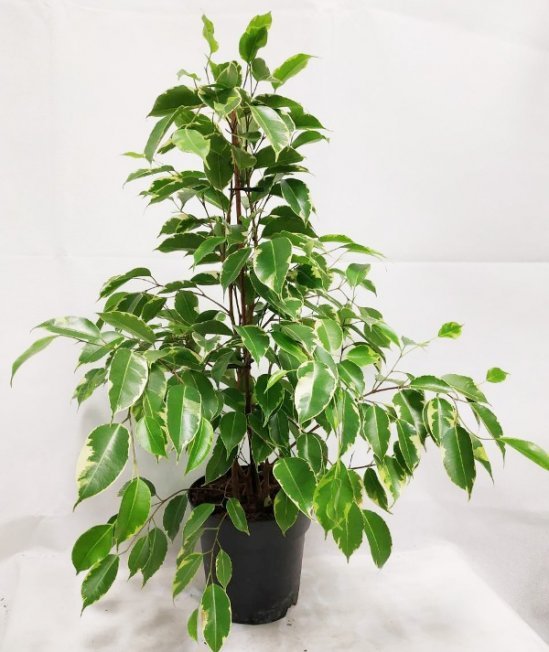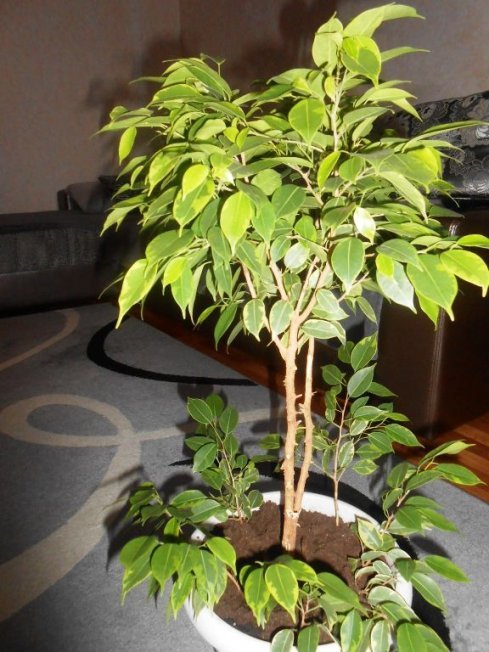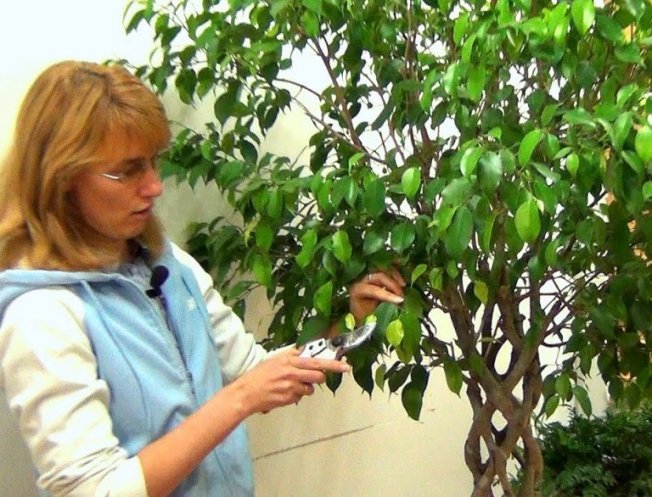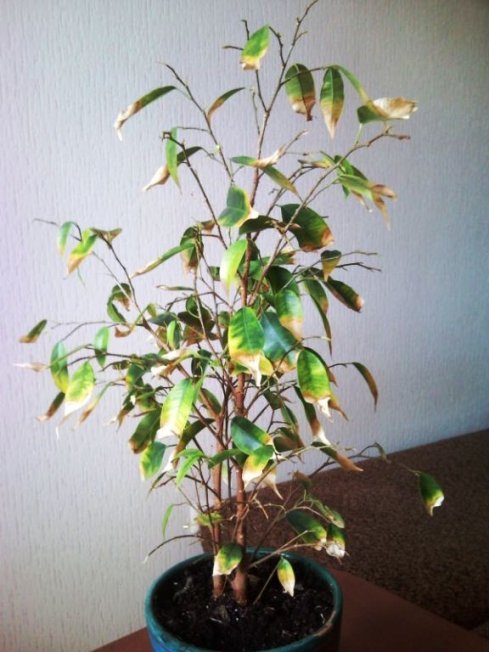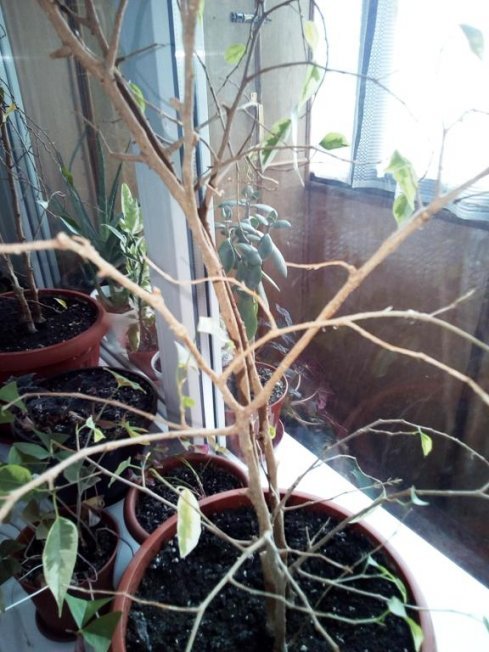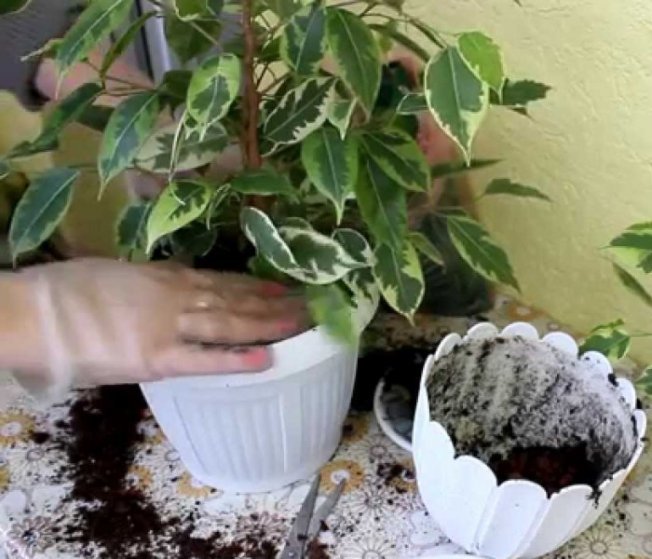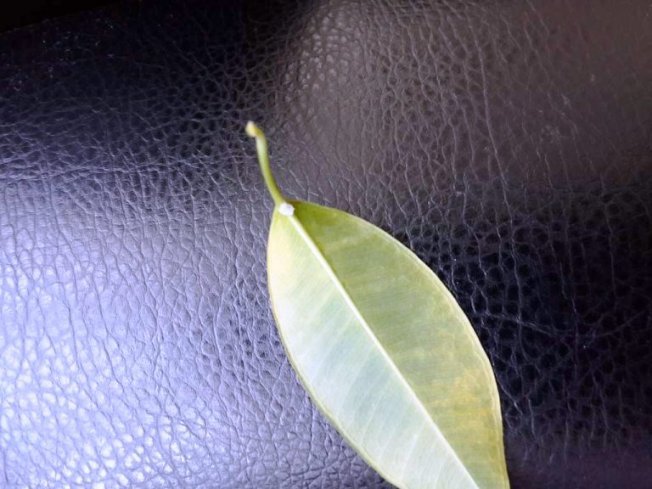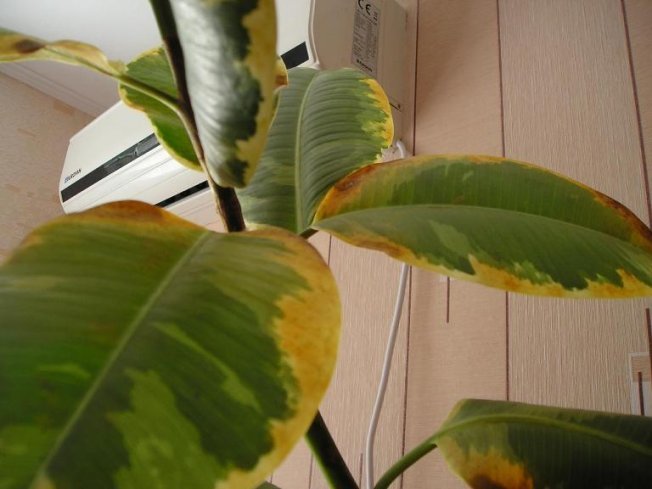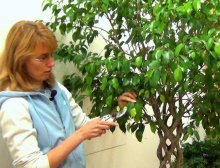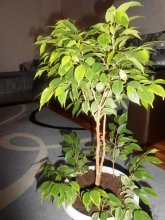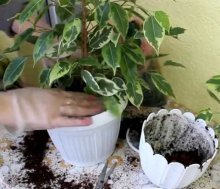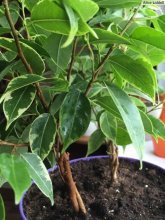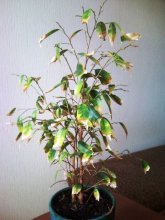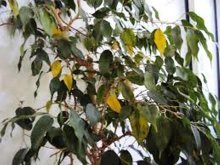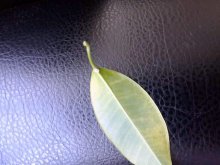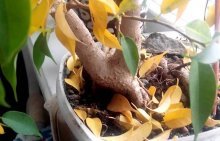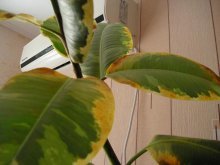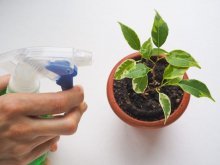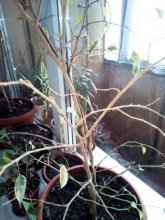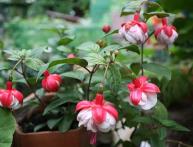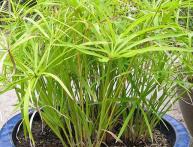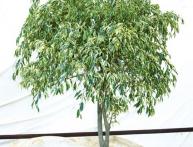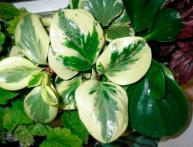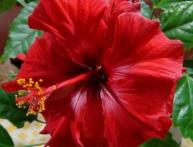Ficus benjamina, why the leaves turn yellow and fall off, possible reasons, in which cases replanting is required

Ficus benjamina is a plant that is often used to decorate the interior of residential premises and offices. With proper care, the flower pleases the owner with bright greenery all year round, but a decrease in the decorative qualities of the plant is often observed.
Let's look at why ficus benjamina leaves turn yellow and fall off, and what to do to solve this problem.
Content:
- Ficus Benjamin, description and photo
- Why do ficus benjamina leaves turn yellow and fall off?
- Diseases and pests
- Why do leaves turn yellow and fall off in winter?
- What to do if the leaves of the ficus benjamina fall off after transplantation
- Why can the leaves of ficus rubber, variegated, and kinki trees turn yellow and fall off?
Ficus Benjamin, description and photo
Ficus Benjamina is a small tree or shrub.
Description and characteristics of the plant:
- The shoots are erect.
- The stem is round and grows slowly.
- Within 10 years its height reaches 100-120 cm.
- Covered with gray or brown bark.
- The leaves are green or marbled in color, the base is smooth or glossy.
- The leaves are oval in shape and have a pointed tip.
- The length of one leaf varies from 6 to 13 cm, and the width from 2 to 6 cm.
- The foliage grows densely and alternately, forming one plane.
- Wide crown, branches hanging down.
The tree is unpretentious, however, there are nuances that should be taken into account when growing the plant indoors.
Why do ficus benjamina leaves turn yellow and fall off?
This problem is typical for this plant, but why this happens is difficult to determine immediately.
There are many factors that contribute to this, let’s look at the main ones:
- Inappropriate temperature conditions. Ficuses do not like low temperatures, so the optimal temperature in the room is considered to be above twenty degrees; in winter, eighteen degrees; it can withstand temperatures of up to ten degrees, but only for a short period of time.
- It is important that the plant does not stand in a draft or is exposed to temperature changes. In summer, for example, you cannot place a flowerpot close to an air conditioner. Without adhering to these conditions, the flower will fade and turn yellow before our eyes.
- Incorrect watering. It is necessary to water the ficus when the top layer has dried 3 cm deep. The flower can withstand dry soil (only for a short period of time), but excess moisture can lead to death. After watering, excess water gets into the pan, which should be removed immediately.
- For high-quality watering, it is better to choose settled water at room temperature.
- Needs foliage spraying.
- Depletion of soil leads to falling and yellowing of the lower foliage. The reason for this is incorrect or untimely feeding. Complete leaf fall is possible if fertilizers have not been used for years.
These problems can easily be solved with proper care.
Let's watch a useful video about why ficus benjamina leaves turn yellow:
Diseases and pests
Ficus Benjamin is susceptible to pest attacks and many diseases.
We indicate the list of insects in the table.
| Pest | Symptoms of damage, methods of control |
| Mealybug | Insect activity is manifested by falling, wilting and curling of leaves |
| Mite | The parasite helps reduce photosynthesis. If you do not provide help, the flower dies. |
| Aphid damage | This is evidenced by yellowing leaves or sudden leaf fall. |
| Shchitovka | Symptoms of infection include the formation of brown spots, sticky residue and sooty fungus. The insect sucks out the juice, causing the flower to lose its vitality. In this case, insecticidal oil, soap solution and a special varnish intended for this crop can be used as a treatment. |
The ficus tree is susceptible to various infectious diseases. Diseases are caused by insects, namely their secretions.
During the period of illness, special solutions are used for therapeutic therapy, and special care and attention are also required.
A fungicide solution works very well. Before the procedure, the affected parts of the plant are pruned. Spraying is carried out several times until the disease goes away completely.
Fungal diseases manifest themselves in the form of rot or mold. The fungus quickly infects the plant, so if urgent qualified assistance is not provided, the infection affects the root system and the flower dies.
If, as a preventative measure, you periodically treat the ficus with the necessary means, then infection can be avoided and the flower will not suffer.
Why do leaves turn yellow and fall off in winter?
In winter, falling and yellowing of leaves most often occurs due to cold. Ficus is a heat-loving plant, so freezing or cold air has a detrimental effect on it.
In winter and even in summer, you cannot place the flowerpot on a tiled floor, as a result the roots will freeze. It is also not recommended that the foliage come into contact with the glass when the flower is on the windowsill. You need to place the pot so that there is sufficient distance between the window and the flowerpot. This point should be taken into account only in winter.
If the room temperature is below 18 or 16 degrees, this will also negatively affect the condition and structure of the leaves.
Another reason for yellowing leaves is overwatering. In winter, the flower is watered once every 7 days.
Additionally, spraying or irrigation is carried out once a week.
When the room temperature is less than specified, watering is not carried out at all. Before the procedure, it is necessary to loosen the soil, this will help water get to the root system faster and not stagnate.
What to do if the leaves of the ficus benjamina fall off after transplantation
Transplantation is performed every year when the ficus is young. The roots grow quickly, and it becomes crowded in the flowerpot. If replanting is not carried out in time, the roots and soil are depleted, and this negatively affects the condition of the entire plant, especially metabolic processes.
However, the transplant itself will not give a 100% guarantee that yellowing of the foliage will not occur.
Much depends on how the procedure was carried out. If you act carelessly, you can easily damage the root or other part of the plant, which will negatively affect its condition in the future. As a result, all the foliage may fall off.
To avoid problems, transplantation should be carried out by transshipment, this will avoid damage.
After the procedure, it is necessary to protect the tree from direct sunlight and light.For the first 14 days, it is necessary to place the pot in the shade, and after this period, gradually accustom it to light.
When, after transplantation, the ficus has dropped all its leaves, there is no need to rearrange it or subject it to any actions. Then you need to leave it alone and wait for new foliage to grow.
Let's watch another useful video on the topic:
Why can the leaves of ficus rubber, variegated, and kinki trees turn yellow and fall off?
After three years of age, the rubber ficus loses several of its lower leaves every year. This process is natural and indicates aging. In this case, where the leaf has fallen, a bud appears from which a new shoot will grow.
If there has been a massive fall of leaves, it is worth thinking about the conditions in which the flower grows and whether all manipulations are being followed.
Most often, the cause of falling off is excessive soil filling, low room temperature, injury to the roots during transplantation, and insect attack.
Ficus kinki will shed its leaves if you use too much fertilizer. When introducing nutrients, it is important to follow a special scheme.
The first fertilizers are applied during the end of dormancy. Subsequently, fertilizing is introduced throughout the spring and autumn.
Mineral complexes specialized for this crop are used as fertilizers. Feed is introduced monthly.
It is worth paying attention to how plants react to the fertilizers you choose. If the leaves begin to fall off or turn yellow, the complex is not suitable and other substances need to be selected.
You can consult with the flower shop seller.Do not neglect the instructions and apply more fertilizer than the specified dosage; this advice also applies to the concentration when diluting the solution.
At the beginning of autumn, the amount of fertilizer is reduced to a minimum, and by the end of the autumn period, fertilizing is stopped until the onset of spring.
The variegated ficus turns yellow and falls off if it has been moved to another room or window sill. This can also be affected by lack of light and cold air.
The optimal temperature range is from plus 17 to plus 22 degrees. Avoid dryness and waterlogging of the soil. Shedding of leaves can occur if cold water is used for watering.
All the tips are very similar, so the recommendations listed above will be relevant for growing any ficus.
So, Benjamin's ficus will feel good if you create the appropriate conditions for it. The main thing is warmth, watering and fertilizing, everything should be in moderation.

